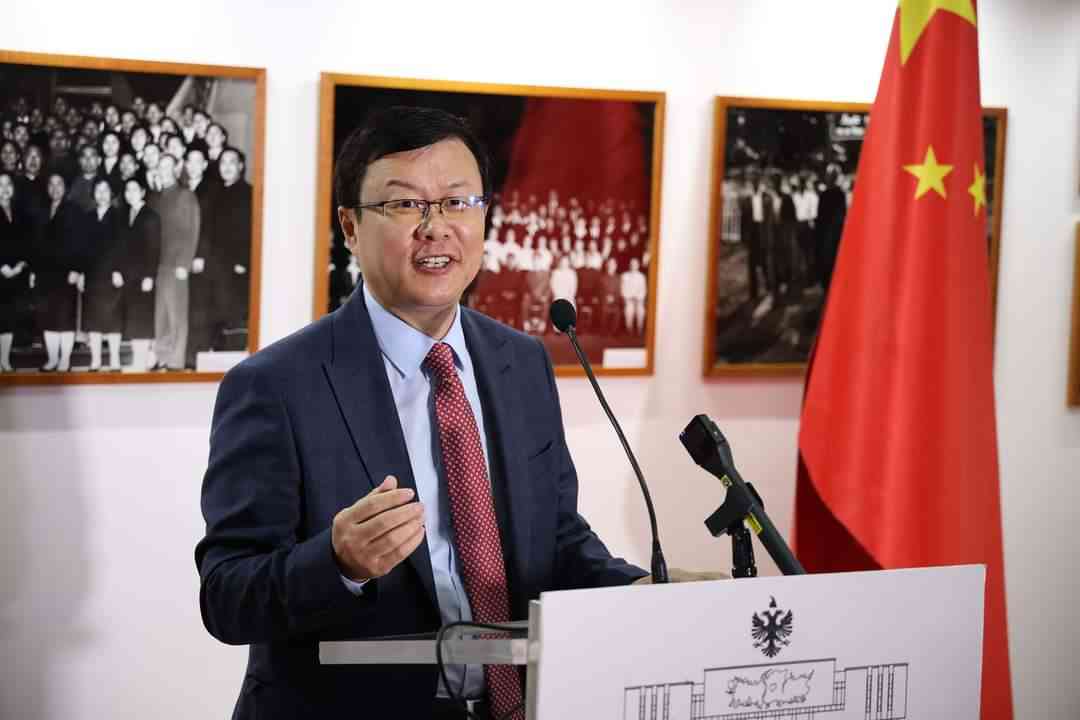
Chinese ambassador to Zimbabwe Zhou Ding shared his country’s experience on sustainable industrialization and economic development at the International Business Conference on the sidelines of the ongoing Zimbabwe International Trade Fair in Bulawayo on Wednesday.
Below is Zhou’s full presentation.
The theme of this event — “Sustainable Industrialisation and Economic Development” holds immense significance for Zimbabwe, for Africa, and for our shared future.
As Chinese ambassador to Zimbabwe, it is my great honour to share China’s experience in sustainable industrialisation and economic development—a story of transformation that stands as a defining case study.
Just decades ago, rural China relied on kerosene lamps; today, it boasts vast solar power stations.
Landline telephones were once a luxury, China now leads the world in 5G connectivity.
This is the power of industrialisation. Here’s the key question: How did China achieve in just 70 years what took the West 200?
Firstly, China chose a development model fitting its own reality.
- The brains behind Matavire’s immortalisation
- Red Cross work remembered
- All set for inaugural job fair
- Community trailblazers: Dr Guramatunhu: A hard-driving achiever yearning for better Zim
Keep Reading
After a century of foreign invasion and domestic upheaval, we rebuilt our industrial base in the 1950s-60s, launched the transformative reform and opening-up drive in 1978, and we have pursued high-quality development since 2012.
The Communist Party of China (CPC) has consistently adapted strategies to our evolving national realities, and created a Chinese path to modernisation. China's journey shows:
- There is no universal blueprint for development—success comes from finding a model that fits a nation's unique context;
- Industrialisation requires visionary leadership that tailors strategies to local conditions, balancing ambitions with pragmatism.
At the core of Chinese modernisation is the steadfast leadership of the CPC, which has provided strategic continuity and pragmatic governance to ensure stability amid complexity.
Secondly, China's economic miracle began with embracing reform and opening-up.
By integrating into global value chains, we attracted investment, technology, and talent—transforming China into a manufacturing and innovation powerhouse, forming a manufacturing ecosystem unmatched in scale and versatility.
Today, we take pride in being the only nation with all industrial categories listed in the United Nations industrial classification system.
In pursuit of its own development and mutually beneficial cooperation with other countries, China stays committed to upholding multilateralism and the rules-based international economic and trade system.
China believes that tariff and trade wars benefit no one.
China will continue to take resolute measures to safeguard its legitimate rights and interests as well as the common interests of the international community, in particular the Global South.
Thirdly, China’s success was the result of substantial and persistent investments in infrastructure, human capital and technology.
China has strategically upgraded traditional industries to be higher-end, smarter, greener and more sustainable, while driving digitised, Internet-based, and energy-efficient economic growth.
In 2024, China’s high-tech manufacturing sector grew by 8.9%, while energy intensity dropped by over 3%.
From producing 13 million electric vehicles annually to developing DeepSeek—a high-performance, open-source Artificial Intelligence model, China’s innovation-driven, eco-friendly growth is both robust and irreversible.
China's story demonstrates that it is possible for a developing country to achieve development through strategic planning, active engagement in global trade and investment, and pursuit of innovation-driven growth.
Every nation's journey is unique, there's no one-size-fits-all industrialisation model.
As a true friend, China supports Zimbabwe's efforts to forge its own modernisation path — one that harnesses Zimbabwe's heritage, resources, and aspirations.
For decades, China has financed and built a great number of key infrastructure projects in Zimbabwe.
The Chinese private sector has also been investing in Zimbabwe.
China has remained Zimbabwe's top foreign investor, with hundreds of Chinese enterprises actively contributing across various sectors.
These investments have delivered tangible benefits: foreign exchange earnings, tax revenues, and job opportunities for Zimbabwean brothers and sisters.
In recent years, China has championed and advanced three pivotal global initiatives — the Global Development Initiative (GDI), the Global Security Initiative (GSI), and the Global Civilization Initiative (GCI) — to strengthen its partnerships with Zimbabwe and the entire African continent.
Our collaboration is rooted in fostering solid foundations that unlock potential.
From boreholes bringing clean water to rural villages to airports connecting Zimbabwe to global markets, from the Hwange and Kariba South Power stations energising the national grid to the Dinson Steel Plant and Titan Energy Complex boosting industrial capacity, from medical teams healing communities to agricultural experts empowering farmers, the China-Zimbabwe partnership proves that true development is not transactional, but transformational.
Last year, President Emerson Mnangagwa’s historic state visit to China marked another milestone in our relations, solidifying our strategic partnership with 17 landmark agreements, and establishing a "five-star ironclad" cooperation framework.
This framework is not just a blueprint; it is a promise to walk side by side as equal partners, for shared benefits.
This year, as we celebrate 45 years of unbreakable China-Zimbabwe friendship, we will continue to translate our leaders’ vision into concrete progress and tangible impact through the Ten Partnership Actions for Modernisation, announced in Beijing during the Forum on China-Africa Cooperation (FOCAC).
This year, as our two nations continue to work hand in hand to implement the important consensus reached between our heads of state, we will jointly deliver tangible benefits to the Zimbabwean people.
Notably, projects such as the High-Performance Computing Centre will be officially handed over; the Belt and Road Joint Laboratory—set to facilitate scientific cooperation—will be commissioned.
New irrigation schemes designed to boost crop yields will break ground, and solar-powered e-facilities for rural communities will be launched to providing access to educational resources and health services. The list goes on and on.
This is just a snapshot of our ongoing collaboration, with more initiatives in the pipeline.
Zimbabwe’s path forward is both visionary and rooted in principle:
- To industrialise without compromising sustainability;
- To innovate while honouring heritage; and
- To integrate into global markets while preserving national sovereignty.
Let us strive for industrialisation with purpuse:
- To build factories that don’t just produce goods, but empower communities;
- To train innovators who don’t just follow trends, but redefine them; and
- To Create growth that doesn’t just lift GDP, but upholds human dignity.
As Zimbabwe marches toward Vision 2030, China stands ready to bring knowledge, technology, experience, and a commitment to co-developing solutions that work for Zimbabwe.
Once again, to the Research Council of Zimbabwe, I’d like to say “Thank You” for hosting this meaningful dialogue.
The story of African industrialisation is being written. Together, through research, collaboration, and unyielding resolve, we can turn vision into reality.










